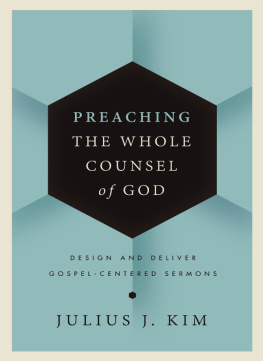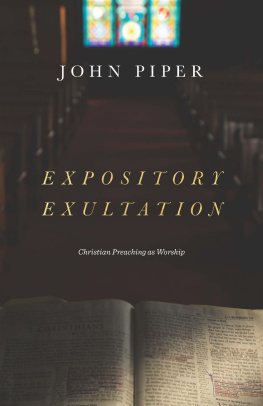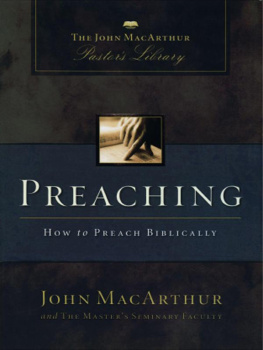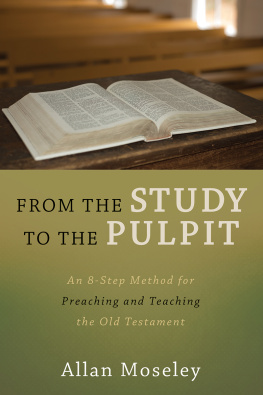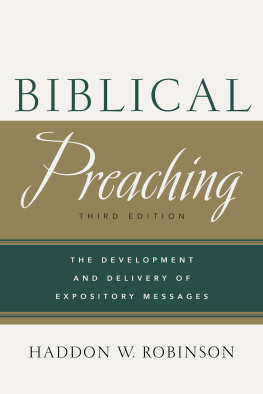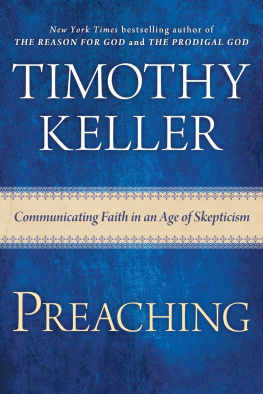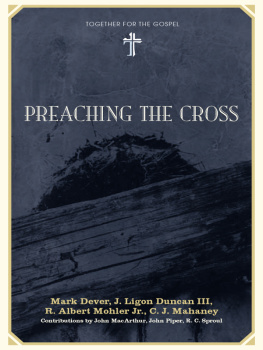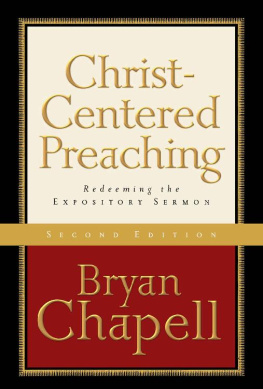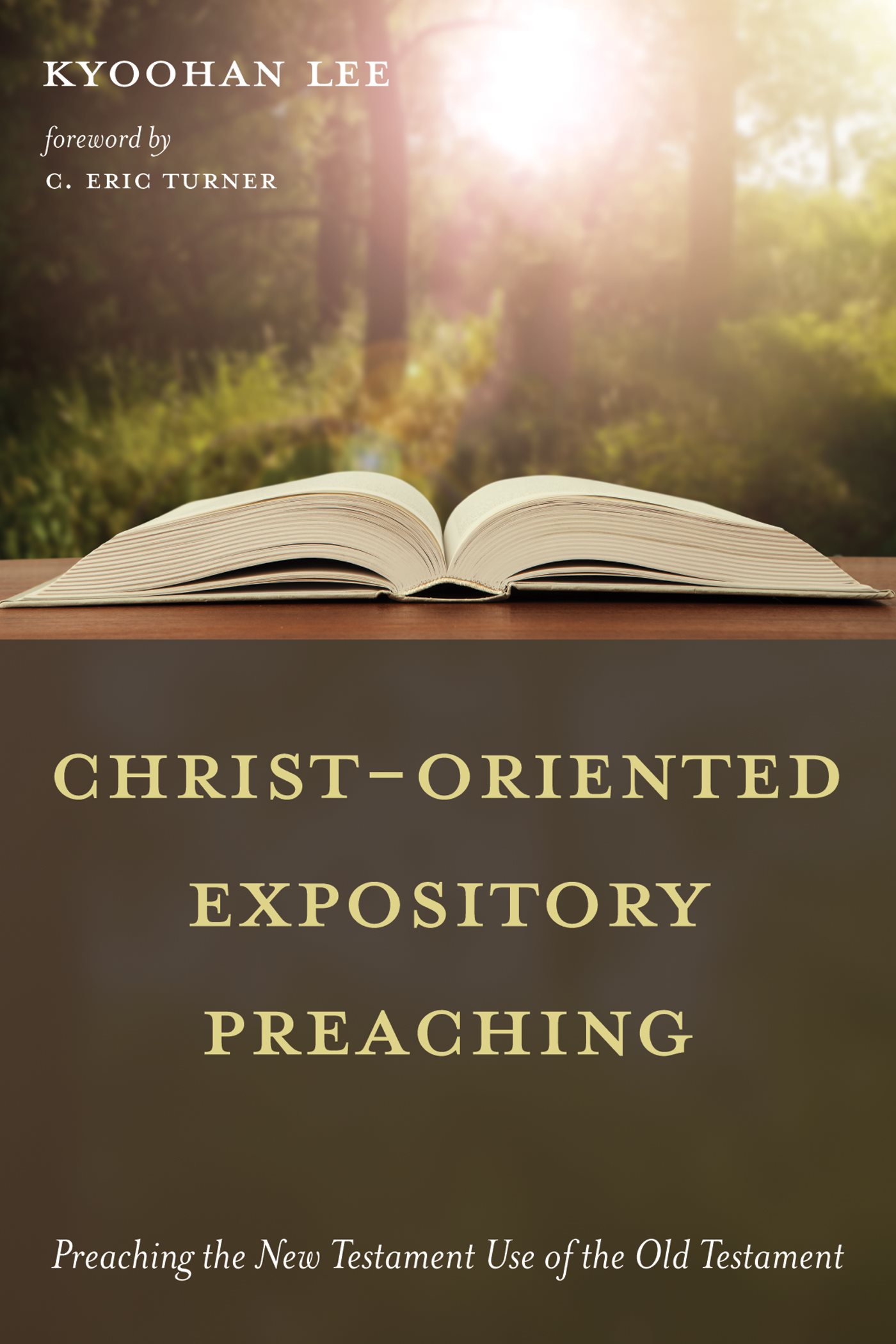Christ-Oriented Expository Preaching
Preaching the New Testament Use of the Old Testament
KYOOHAN LEE
Foreword by C. Eric Turner
Chapter
Introduction
Between Two Horizons
Todays sermons encounter serious attacks from the spirit of the fallen world. The postmodern worldview, which embraces strong subjectivism and relativism, has flown into the church and mitigated the authority of the proclamation of the Word of God.
In his work, The Two Horizons , Anthony C. Thiselton remarks, Understanding takes place when the interpreters horizons engage with those of the text. This merging of two horizons must be considered a basic element in all explanatory interpretation.
From Reconstruction To Deconstruction
A range of philosophical, theological, and cultural forces have caused this hermeneutical-homiletical crisis. First, the Enlightenmenta broad and diverse intellectual movement that embraced and lauded empiricism, rationalism, and scientific enquiryled to the erosion of the Reformers doctrine of sola scriptura.
In the vortex of liberal theologies that followed Schleiermacher, all with their roots in the Enlightenment, the neo-orthodoxy fostered by Karl Barth and Emil Brunner paradoxically also contributed to the erosion of the principle of sola scriptura , only from another angle, since their theological method did make a radical turn from the God of Immanence to the God of Scripture.
Kevin J. Vanhoozer, in fact, speaks of the postmodern shift as a rebellion against modernity, incorporating, as it does, a rejection of the absoluteness of reason, of the notion that people are able to transcend their context, and the idea that there are any objective universal principles.
Another who has had a significant impact on postmodern hermeneutics and interpretation is French philosopher, Jacques Derrida, whose deconstructionism or poststructuralism, is based on the principle that language is a system of signs that does not provide a full presence of the signified. a position that has clear and significant implications for biblical interpretation.
Amidst these various challenges to the doctrine of sola scriptura , a new literary term, intertextuality has recently been introduced to the area of biblical studies. It was Julia Kristeva who coined the term in 1969 , and it has been taken up by a number of postmodern interpreters. The implications for homileticsand in particular for the way the preachers interpret the New Testament references to the Oldare radical and serious, and will become clearer in the chapters that follow.
Preaching the NT Use of the OT
If one
The New Testament use of the Old Testament (The NT use of the OT) is the NT writers use of OT quotations, allusions, and echoes.
Many pastors and preachers consider preaching the NT use of the OT too complex and impractical for pulpit ministry, and this for two reasons. First, it is a relatively new topic in Christian homiletics. G. K. Beale and D. A. Carsons Commentary on the New Testament Use of the Old Testament was published as recently as 2007 . Beales Handbook on the New Testament Use of the Old Testament: Exegesis and Interpretation came out in 2012 . These books are unique practical guides for interpreting the NT use of the OT to date.
Second, existing theories of biblical interpretation and methods for the NT use of the OT do not offer clear practical guidelines for the ministry of proclamation.
This book thus aims at showing homileticians and preachers how to bridge the gap between biblical interpretation and proclamation when preaching the NT use of the OT.
A Valid Hermeneutical Bridge
When it comes to understanding OT quotations, allusions, and echoes in the NT, the preacher as biblical interpreter needs to ask: How did Christ and the NT writers utilize the OT? and Can contemporary interpreters recapture the NT writers approach? It is my argument that the New Testament writers interpreted the Old Testament in line with the original intention of the Old Testament authors, and present-day interpreters can know the meaning and significance of these OT references, not only in their original context, but also in the NT writers immediate contexts, even though they might not understand them fully.
For understanding the intention of the OT biblical writers, Gerhard Hasel writes that the distinction between what a text meant and what a text means is at the core of the most fundamental problem of OT theology.... Theological interpretation is the translation of the historically reconstructed text into the situation of the modern world .
The Self-Attesting Christ of Scripture
On the road to Emmaus, the risen Lord Jesus interprets what he has accomplished according to the Scriptures as follows: O foolish ones, and slow of heart to believe all that the prophets have spoken! Was it not necessary that the Christ should suffer these things and enter into his glory? And beginning with Moses and all the Prophets, he interpreted to them in all the Scriptures the things concerning himself (Luke :). Here Jesus is illuminating the unbreakable hermeneutical bridge or continuity between the Testaments: These are my words that I spoke to you while I was still with you, that everything written about me in the Law of Moses and the Prophets and the Psalms must be fulfilled (Luke :, emphasis added).
This is our Lords approach to interpreting and preaching Scripture concerning himself (Luke :). Following in the tradition of sola scriptura , this present work fundamentally advocates the canonical self-interpreting Christ of Scripture.
The first two verses of the Epistle to the Hebrews state that Gods divine eloquence is finally unveiled in Christ: Long ago, at many times and in many ways, God spoke to our fathers by the prophets, but in these last days he has spoken to us by his Son (Heb :a). Indeed, the Christ is not only the unbreakable hermeneutical bridge between the two Testaments, but is also the infallible base model for all subsequent Christian interpretation and proclamation.
Continuity Between Two Worlds
Sidney Greidanus writes that the preacher is a hermeneutist, because biblical interpretation comes before proclamation.
Sola scriptura means that the infallible rule of interpretation of Scripture is the Scripture itself, and for this the Spirit is needed.
In his work, Between Two Worlds: The Challenge of Preaching Today , John Stott claims that preaching is bridge-building between the biblical and contemporary world.
Christ-Oriented Approach
In this book I seek to answer the following primary question: What if the present-day preacher as a biblical interpreter faithfully follows the legacy of Jesus Christ, the Interpreter of interpreters and the Preacher of preachers, in the matter of preaching the NT use of the OT? In other words, I suggest a Christocentric approach to preaching the NT use of the OT that is in line with Jesuss hermeneutic, and seek to provide a hermeneutical bridge that is accurate, effective, and practical.
The argument sets forth that our Lords own hermeneutic functions as an appropriate exegetical-theological-homiletical approach.
Just as Peters sermon provides an example of Christ-oriented expository preaching, the apostolic preachers, such as the Apostle Paul, the author of Hebrews, and the Apostle John, are also much indebted to Jesuss hermeneutic (Luke :, ). When preaching the New Testament, so too the present-day preacher needs to effectively engage contemporary audiences with the meaning and significance of these references after the pattern of our Lords hermeneutic.


